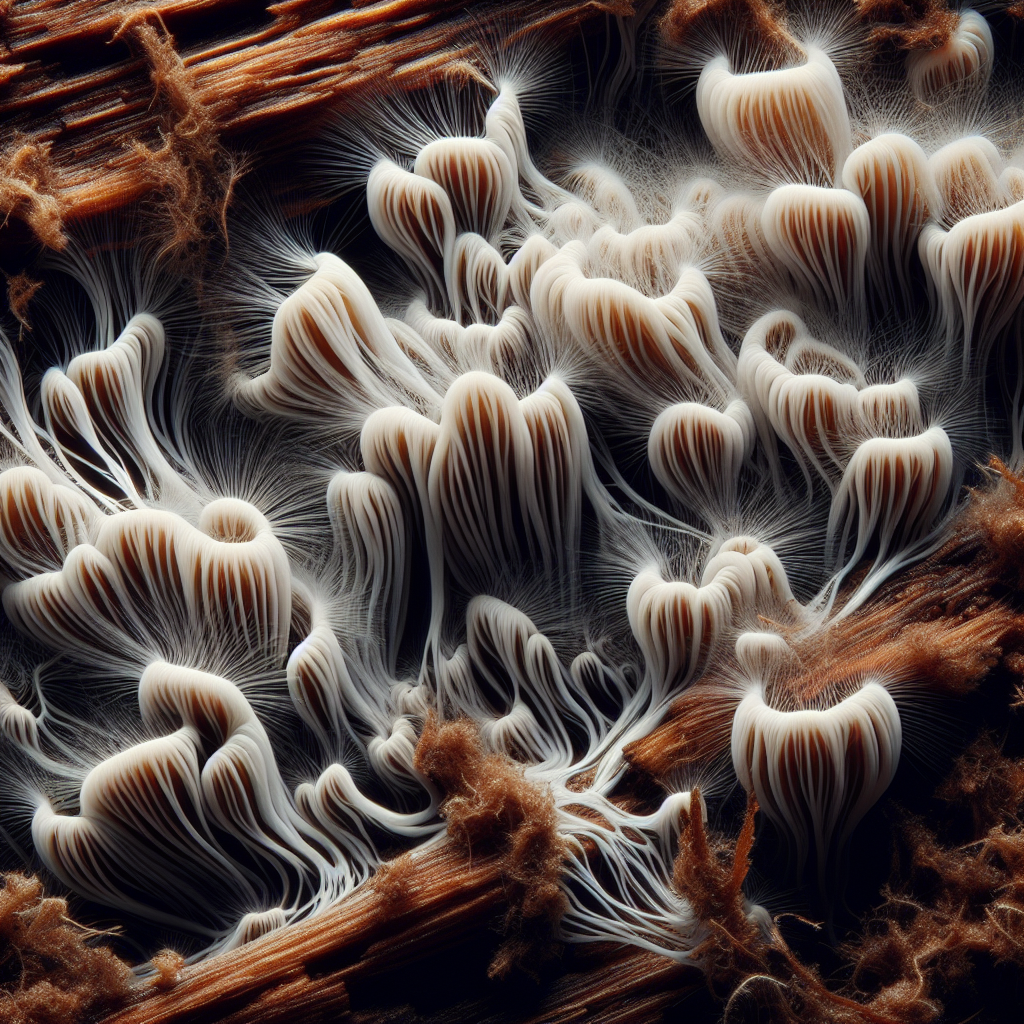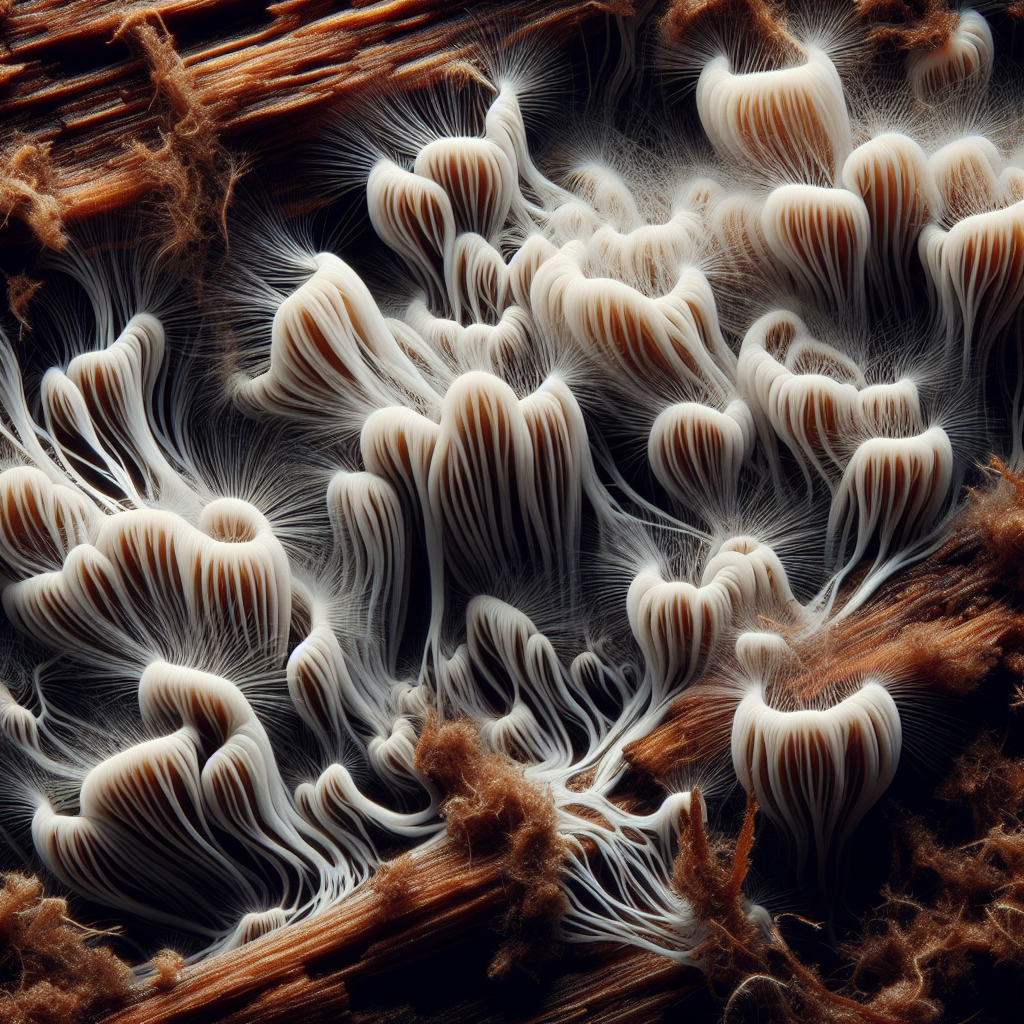In the comprehensive guide entitled “Understanding Why My Mycelium is Growing Slowly,” the primary focus revolves around addressing the concerns of cultivators and enthusiasts who might be grappling with the dilemma of slower mycelium growth. Through this engaging exploration, you’ll be privy to detailed explanations pinpointing possible reasons for your mycelium’s sluggish pace, combined with actionable insights and solutions to mitigate these problems, thereby promoting faster, healthier growth.
Understanding Mycelium
As you delve into the world of mycology, one term you will frequently encounter is mycelium. In this section, we shall explore the basic characteristics of mycelium, its role in fungi growth, and its life cycle.
Basic characteristics of mycelium
Mycelium is the vegetative part of a fungus. It is a network of tiny, thread-like structures called hyphae. This branching, filamentous structure is almost translucent and seems white due to the high density of hyphal tips. It is remarkable for its high surface area-to-volume ratio, which allows it to efficiently absorb nutrients.
Role of mycelium in fungi growth
Mycelium plays a vital role in the life cycle and growth of fungi. It acts as the root system, absorbing nutrients from its surroundings and transporting them to the fruiting body. It is the driving force behind the fungus’s ability to decompose organic matter and recycle nutrients in an ecosystem.
Life cycle of mycelium
The life cycle of mycelium begins when fungal spores land in a suitable environment and germinate. Each spore grows into a hypha, and a network of hyphae forms the mycelium. Under the right conditions, the mycelium differentiates to form a fruiting body such as a mushroom.
Ideal Conditions for Mycelium Growth
Just like any organism, mycelium growth requires specific conditions. The ideal temperature, moisture, oxygen levels, and the importance of the correct substrate contribute significantly to its growth rate and health.
Right temperature for mycelium
The ideal temperature for mycelium growth varies depending on the type of fungus, but generally falls within 24 to 27 degrees Celsius. Temperature outside this range can slow down growth or even kill the mycelium.
Mycelium’s need for moisture
Mycelium also needs moisture to grow, as it is made up of around 90% water. However, it is a balance act: too much moisture can drown the mycelium or lead to the growth of harmful bacteria, while too little can lead to dehydration.
Importance of oxygen for growth
Oxygen is a crucial element for mycelium growth since fungi, like humans, respire, taking in oxygen and releasing carbon dioxide. Lack of sufficient oxygen can slow down the growth of mycelium or cause it to die off.
Role of substrate in mycelium’s growth
The substrate is essentially the food source on which the mycelium grows. Certain substrates, rich in nutrients, are more beneficial for mycelium growth—for instance, a mixture of straw and horse manure. The choice of substrate is, thus, critical to ensure healthy mycelium growth.
Common Reasons for Slow Mycelium Growth
When it comes to slow mycelium growth, there are several factors to consider, including inappropriate temperature, low moisture levels, lack of sufficient oxygen, and unsuitable substrates.
Inadequate temperature
Inadequate temperature is a common reason for slow mycelium growth. Both temperatures below and above the ideal range can negatively impact growth. It can either slow down the metabolic processes or denature the fungi’s proteins, affecting its physiological functions.
Low moisture levels
Low moisture levels can cause dehydration, which inhibits the growth of mycelium. As mentioned earlier, mycelium is made up of approximately 90% water—it needs adequate moisture for all its metabolic functions.
Lack of sufficient oxygen
Like all aerobic organisms, fungi require oxygen for metabolism and energy production. Insufficient oxygen can slow down these metabolic processes, thereby slowing mycelium growth.
Unsuitable substrate
If the substrate is lacking in nutrients, or contains substances harmful to the fungus, mycelium growth can be negatively affected. An understanding of the particular needs of the mycelium strain you are cultivating is key.

Understanding the Role of Temperature in Mycelium Growth
The temperature plays an instrumental role in mycelium growth. Being ectotherms, fungi rely on environmental temperature for their metabolic processes.
Ideal temperature for mycelium
The ideal temperature for mycelium growth typically lies between 24 to 27 degrees Celsius. This is the range at which mycelium metabolism and growth are most active.
Effects of low temperature
When the temperature falls below this range, mycelium growth starts to slow down. The low temperature reduces metabolic activity and energy production, thereby inhibiting growth.
Effects of high temperature
Similarly, a high temperature can also adversely affect mycelium growth, potentially leading to thermal stress. This can result in protein denaturation and cellular damage, thereby slowing growth or causing death.
Temperature regulation methods
Methods for regulating temperature include using a heating mat or a climate-controlled room to maintain ideal temperature conditions. Periodic monitoring is advised to prevent any harm to the mycelium.
Analyzing the Role of Moisture in Mycelium Growth
Like all living organisms, mycelium requires a certain amount of water to perform its metabolic functions.
Ideal moisture levels for mycelium
Mycelium needs to be moist but not waterlogged. Over-watering can cause anaerobic conditions, leading to drowning or bacterial growth.
Effects of dehydration
Dehydration can cause a slowdown in metabolic processes, leading to slow or stunted growth. Severe dehydration can even prove fatal.
Effects of excess moisture
On the other end of the spectrum, excess moisture can cause just as much harm as dehydration. It can prevent oxygen from reaching the mycelium or promote harmful bacterial growth.
Maintaining correct moisture levels
To maintain the correct balance of moisture, daily monitoring and adjustments are required. One advisable method is the mist-and-fan technique—misting the mycelium to provide humidity and fanning to provide aeration.
Impact of Oxygen on Mycelium Growth
Oxygen is vital for mycelium growth. It’s crucial for energy production and growth, and a lack of it can lead to many problems.
Need for oxygen in mycelium growth
Fungi are aerobic organisms that require oxygen for respiration, a process in which they convert nutrients into energy. This energy fuels growth, so oxygen is vital.
Symptoms of oxygen deficiency
A lack of sufficient oxygen can hamper metabolic processes, resulting in slow growth. Signs of oxygen deficiency include a decrease in growth rate and halting of growth altogether.
Ensuring efficient oxygen supply
To ensure an efficient supply of oxygen, maintaining good airflow is crucial. This can be achieved by fanning the mycelium regularly or providing a constant airflow using a fan or air pump.
Understanding the Role of Substrate in Mycelium Growth
The substrate is essentially the mycelium’s food source. Its nature and preparation significantly impact the mycelium’s growth.
Preferred substrates for mycelium growth
Mycelium can grow on a variety of substrates. The most commonly used ones in cultivation are grains, straw, wood chips and compost. These materials provide the essential nutrients needed for growth.
Uneffective substrates and their impact
Unsuitable substrates, containing substances toxic to mycelium, can inhibit growth or cause mycelium death. Additionally, if the substrate lacks the necessary nutrients, mycelium growth can be stunted.
Selecting and preparing substrates
An intriguing element of mycelium growth that needs careful consideration is the selection and preparation of appropriate substrates. The substrate should be sterilized to kill off any competing organisms and then inoculated with the fungal spores.
Influence of Contamination on Slow Mycelium Growth
contamination is another common reason for slow mycelium growth. It competes with the mycelium for nutrients and creates an unfavorable environment for growth.
Types of contamination
Contaminants can be other fungi, bacteria, or insects. They pose a significant challenge because they often thrive in the same conditions as mycelium.
Effects of contamination on mycelium
Contamination can lead to slower mycelium growth, as the contaminants compete for the same resources. In severe cases, it can even lead to the death of the mycelium.
Techniques to avoid contamination
Preventing contamination is a critical aspect of successful mycelium cultivation. Sterilization of substrate, equipment, and working area, and using proper protective techniques can help reduce the chance of contamination.
Role of Strain Genetics in Mycelium Growth Speed
The growth speed of mycelium can also be influenced by the genetics of the strain.
Genetic variability in mycelium growth
Different fungal strains have different growth rates due to genetic variability. Understanding these differences can help in selecting the best strains for cultivation.
Influence of strain selection
The strain selection is essential for successful mycelium cultivation. Some strains of fungi grow faster than others, and understanding this can help enhance productivity.
Understanding strain rejuvenation
Over time, mycelium cultures can lose their vigor due to genetic degeneration. Rejuvenating the strain, or introducing fresh genetics, can boost growth and improve yields.
Troubleshooting Slow Mycelium Growth
Should you encounter issues with slow mycelium growth, you need to identify the root cause of the problem. This section discusses steps to identify growth issues, understanding common problems, and proactive measures to rectify the situation.
Steps to identify growth issues
Identifying issues requires careful observation and review of the growing conditions. Consider whether the temperature, moisture, and oxygen levels are consistent with the mycelium’s needs. It is also essential to ensure that the growing medium is free of contaminants and suitable for the particular bar of mycelium.
Understanding common problems
Common problems leading to slow mycelium growth can range from unsuitable growing conditions like temperature fluctuations and incorrect moisture levels to issues with the substrate or contamination. Slow growth can also be due to the aging of your cultures or strain degeneration.
Proactive measures for faster growth
Proactive measures can include maintaining a sterile environment, using appropriate substrates, and ensuring optimal growing conditions. Regular monitoring and quick identification of any issues can also prevent any long term impact on mycelium growth. It’s important to remember that patience and meticulous attention to detail eventually pay off in successful mycelium cultivation.
